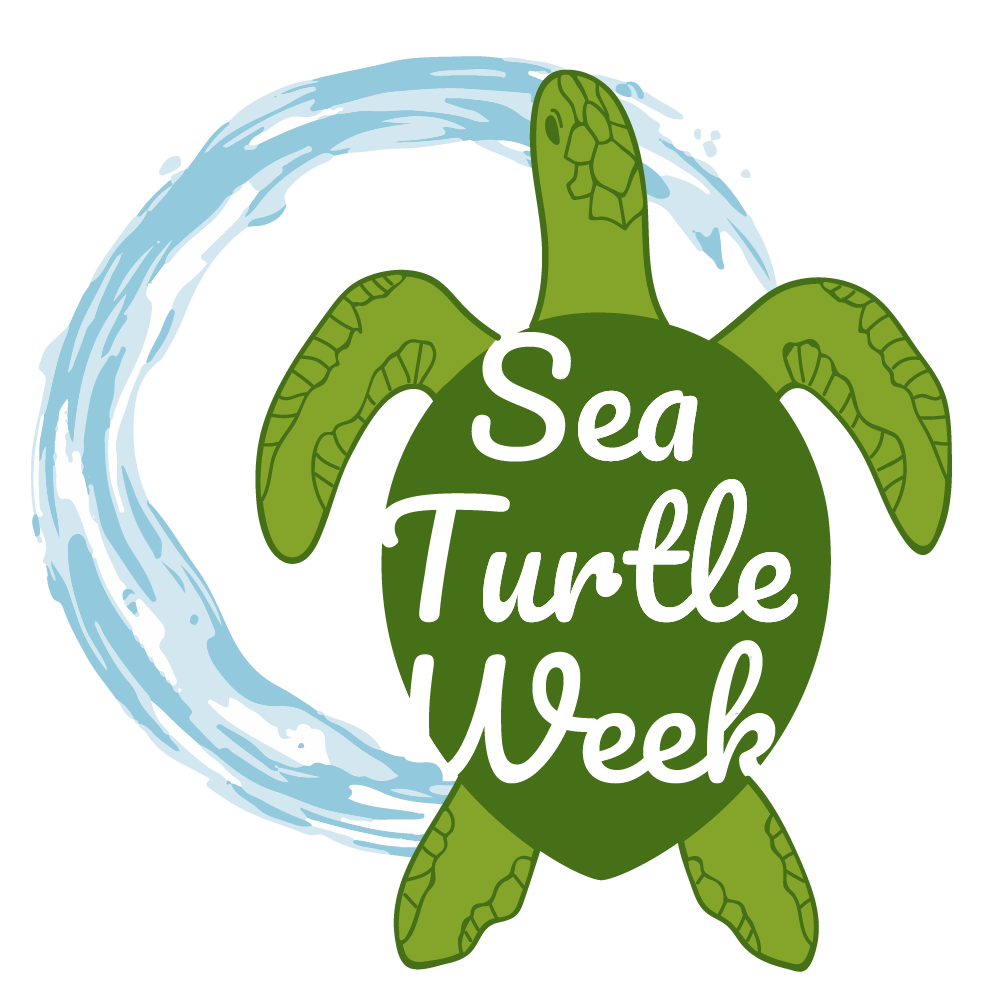JUNE 13TH - HAWKSBILL SEA TURTLE DAY
Scientific Name: Eretmochelys imbricata
Size: 2-3 feet (0.5-1 meters)
Weight: 100-200 pounds (45-90 kg)
Diet: Sponges, marine algae, corals, mollusks, tunicates, crustaceans, sea urchins, small fish, jellyfish
IUCN Status: Listed as Critically Endangered, Population Trend: Decreasing / ESA - listed as Endangered
FUN FACT
Named for its narrow head and sharp, bird-like beak, hawksbills can reach into cracks and crevices of coral reefs looking for food. Their diet is very specialized, feeding almost exclusively on sponges.
BEHAVIOR
Considered by many to be the most beautiful of sea turtles for their colorful shells, the hawksbill is found in tropical waters around the world. They spend their time in coral reefs, rocky areas, lagoons, mangroves, oceanic islands, and shallow coastal areas.
LIFESPAN
Hawksbills reach maturity at 20-35 years and are estimated to live to 50-60 years old. Their population has declined more than 80% in the last century, primarily due to the trade in their beautiful carapace (shell), also referred to as “tortoiseshell.” Its carapace, brightly colored with intricate designs, is traded internationally for ornamental purposes. The shell is used for items such as jewelry, combs and brushes, and inlay in furniture and other decorative pieces.
REPRODUCTION
They’ll nest 3-5 times per season and lay up to 200 eggs per nest. Eggs incubate for roughly 2 months before hatching. They prefer beaches with vegetation where they can nest under or in.
DISTRIBUTION
Hawksbills inhabits tropical and some sub-tropical regions in the Atlantic, Pacific, and Indian Oceans. The largest populations occur in the Caribbean Sea, the Seychelles, Indonesia, Mexico, and Australia. Hawksbills are not found in the Mediterranean and few are found in US waters; only a handful nest in Florida each year.
World map providing approximate representation of the hawksbill turtle's range - NOAA Fisheries
MAJOR THREATS
Hawksbills were hunted almost to extinction prior to the ban on the tortoiseshell trade; Japan imported an estimated 2 million turtles between 1950 and 1992. Despite the fact that the international trade of their shells is now illegal, there is still a thriving black market.
Other threats include destruction of nesting and feeding habitat, pollution, boat strikes, coastal development, entanglement in fishing gear, consumption of their meat and eggs, and destructive fishing practices like dynamite fishing.



